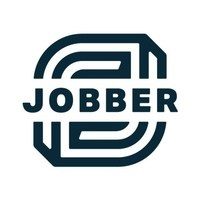New tool makes it easier to balance pricing, labor costs, and expenses to fully understand every job’s profit margin Jobber, the leading provider of operations management software for home service businesses, today announced the launch of a new job costing feature that enables home service businesses in any industry, including contracting and construction, landscaping, tree Read more
labor costs

New tool makes it easier to balance pricing, labor costs, and expenses to fully understand every job’s profit margin
Jobber, the leading provider of operations management software for home service businesses, today announced the launch of a new job costing feature that enables home service businesses in any industry, including contracting and construction, landscaping, tree care, painting, HVAC, and roofing, to more accurately track and understand job costs and profit margins. The feature delivers increased insight into the labor, material, and miscellaneous expenses associated with a job to better understand its profitability, and to ensure service pros are earning the highest profit margins possible—without the complexity of switching between spreadsheets and multiple software.
“With material and labor costs rising, and pricing pressure increasing from homeowners, it’s easy for small businesses to get into situations where jobs become unprofitable,” said Sam Pillar, CEO & co-founder of Jobber. “One of the key measures of success for our customers is profitability. Unknowingly taking a loss on a job due to incorrect costing can have a negative impact on a business. Jobber’s new job costing feature simplifies the tracking of input costs and profitability so service pros can make important operational decisions, stay competitive, and take on the work that’s ultimately going to grow their businesses.”
The feature helps ensure that one-off jobs, such as plumbing repairs, handiwork, and landscaping projects, are profitable by tracking costs and calculating profit margins in real-time directly on the job page. Service pros can also view these trends in a report to compare profitability for different jobs and get insights to improve future pricing, estimation, and resource allocation. The profitability of each job is calculated using:
- Timesheets: Based on the hourly cost of each employee and their time worked on a job.
- Line items: The materials used on the job, including both the unit cost and price.
- Expenses: These are the expenses spent on a job
“Jobber has done a great job streamlining and organizing my business, and now with the new job costing feature, it has taken our efficiency to the next level,” said Scott Geddis, owner of M&M Skylights based in Newton, New Hampshire. “We’ve increased our revenue by 15 to 20% because I’m able to look at the data and determine in real-time what jobs were most profitable, allowing me to price future jobs with more accuracy. The tool is simple to use and helps to ensure we’re running a profitable business so we can continue growing and rewarding our staff for their hard work.”
Job costing joins a suite of other Jobber tools and integrations that help service pros win more work and generate more revenue. The company’s integration with Thumbtack, for example, helps service pros instantly connect with new customers and book more profitable jobs faster, while the advanced quoting feature gives service pros the ability to sell more with optional line items.
Job costing is available to Jobber customers on the Grow membership plan. To learn more, visit: https://getjobber.com/features/job-costing-software/.

According to Lowe’s State of the Pro report, poor quality craftmanship (64%) and a lack of warranty (60%) are among the top challenges homeowners identify as “major,” suggesting there could be other factors that prevent homeowners from re-hiring. Learn more about what matters most to customers here Read more

According to Lowe’s State of the Pro report, poor quality craftmanship (64%) and a lack of warranty (60%) are among the top challenges homeowners identify as “major,” suggesting there could be other factors that prevent homeowners from re-hiring. Learn more about what matters most to customers here.

Rising labor costs and a general shortage of skilled labor affect Pros’ ability to manage their workload. Although Pros are more likely to consider labor challenges minor, Lowe’s State of the Pro report shows that they still expect these challenges to persist in coming months – especially with 74% of Pros agreeing that they rely Read more

Rising labor costs and a general shortage of skilled labor affect Pros’ ability to manage their workload. Although Pros are more likely to consider labor challenges minor, Lowe’s State of the Pro report shows that they still expect these challenges to persist in coming months – especially with 74% of Pros agreeing that they rely on their team more than ever before. Read more about what Pros are doing to retain their crew and attract new talent here.
